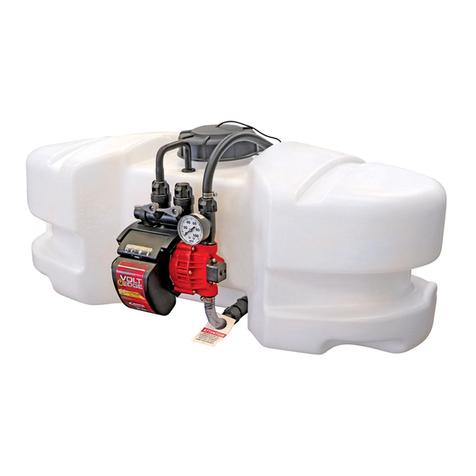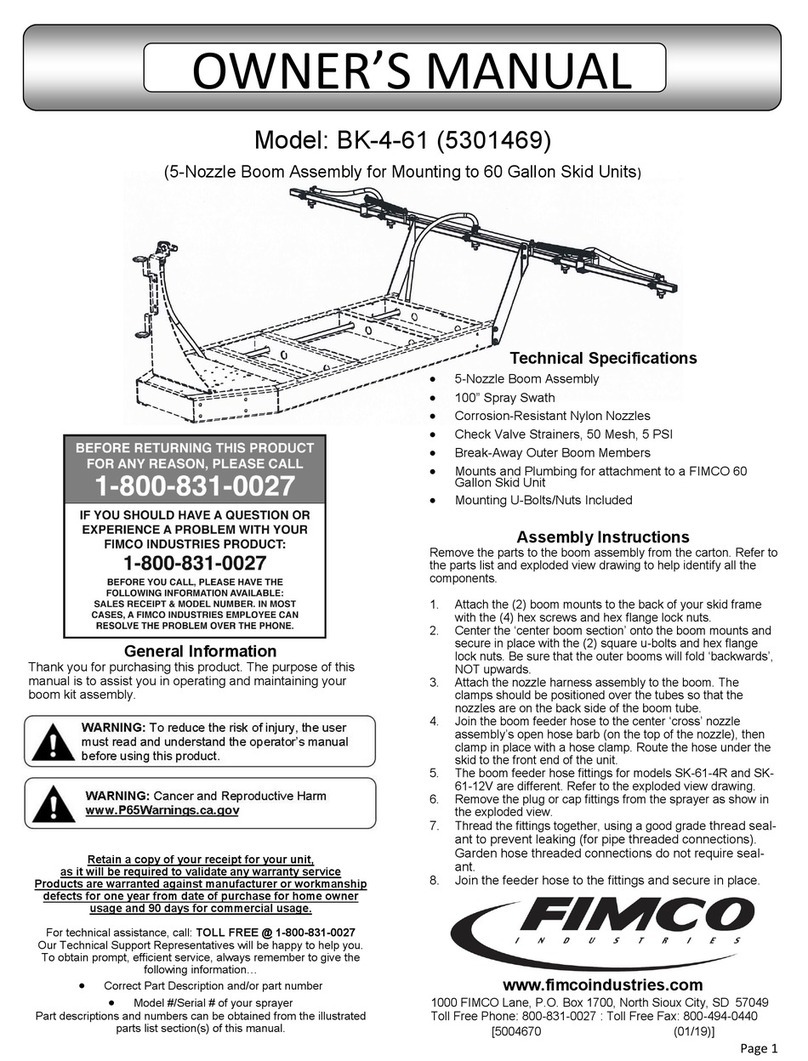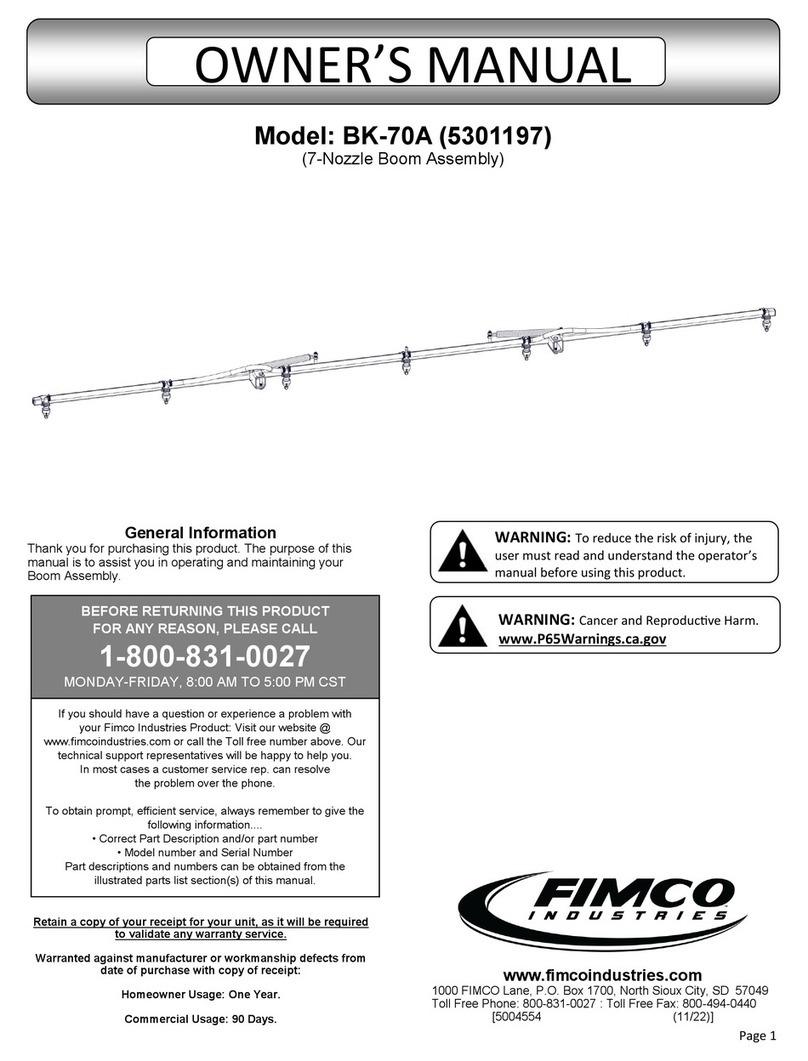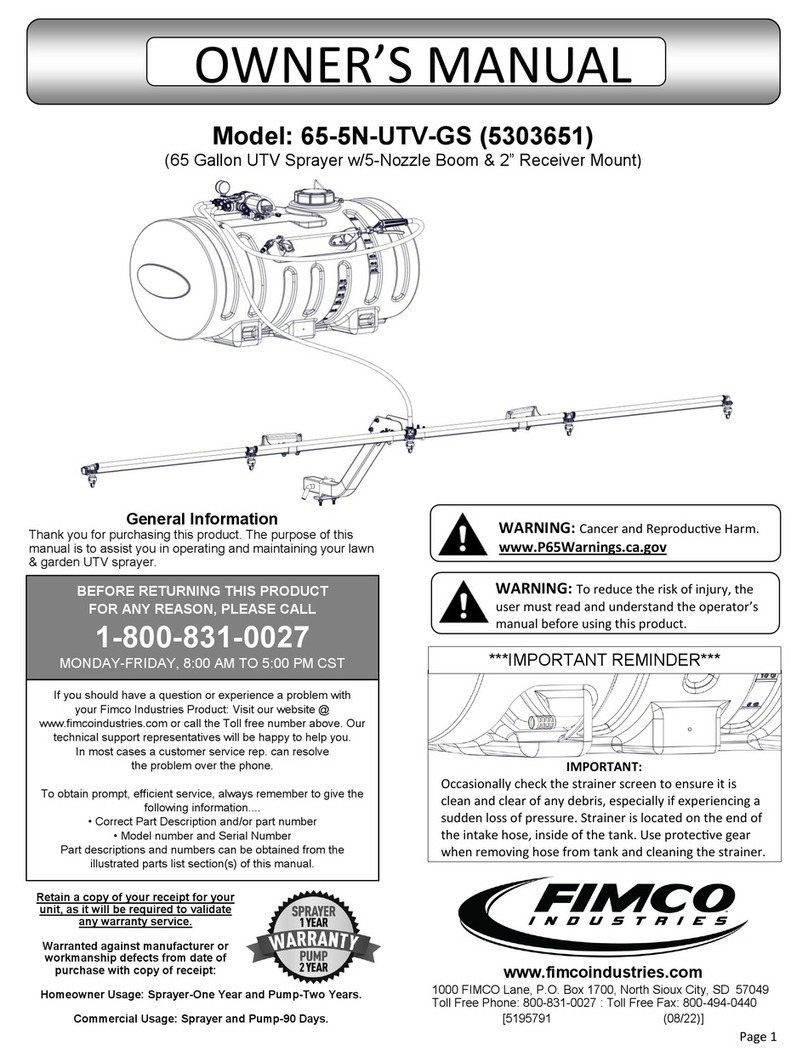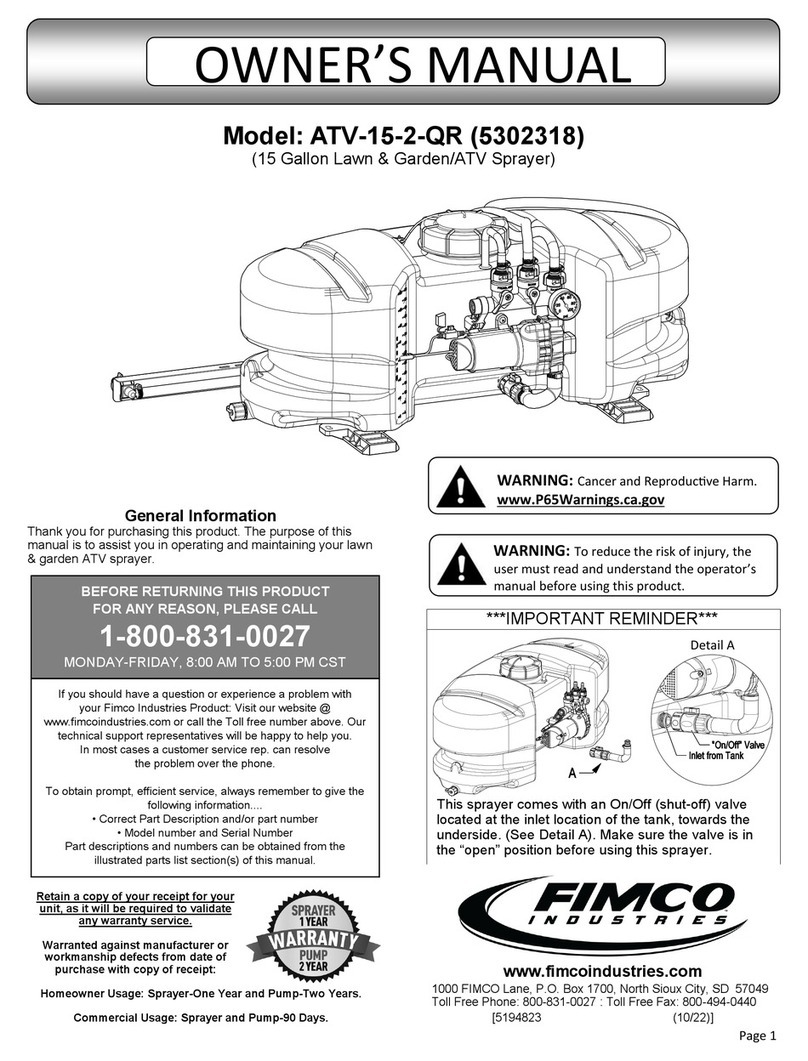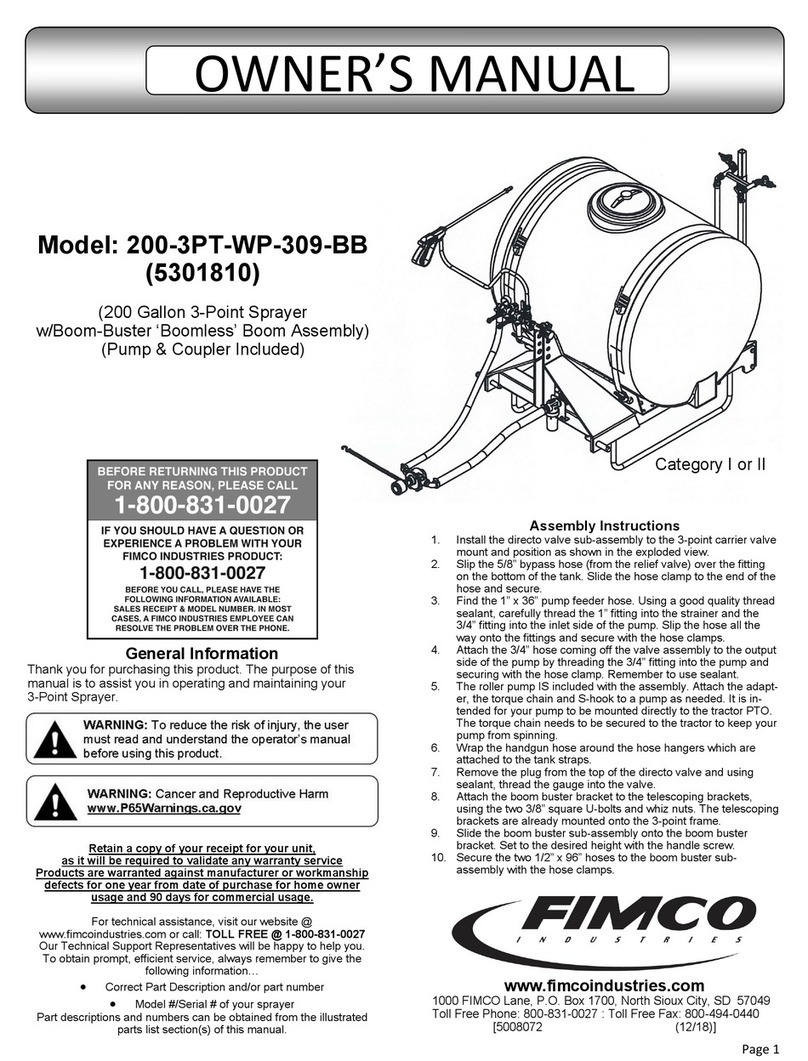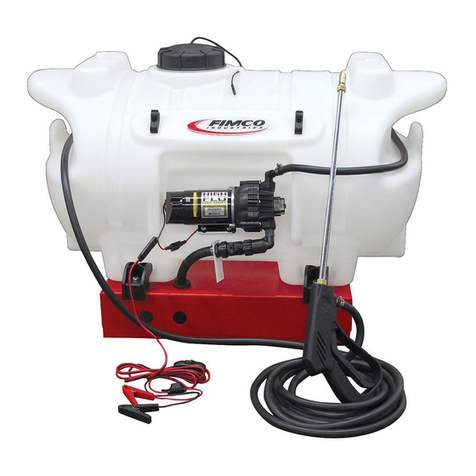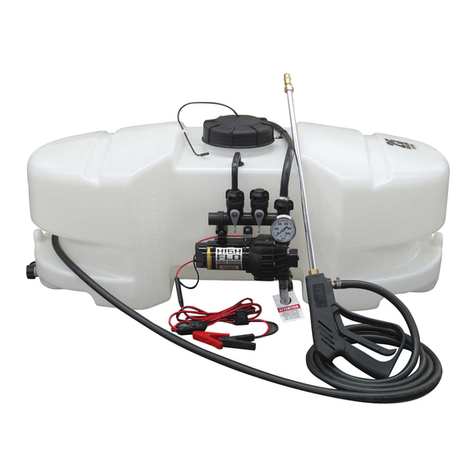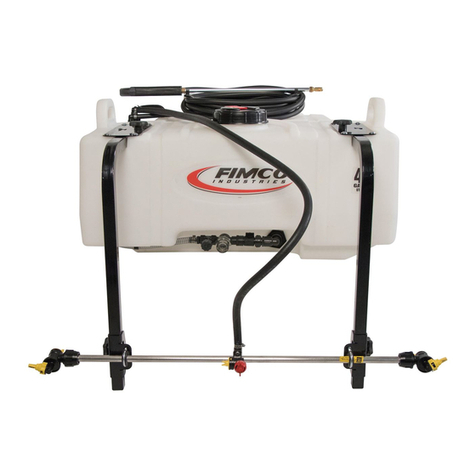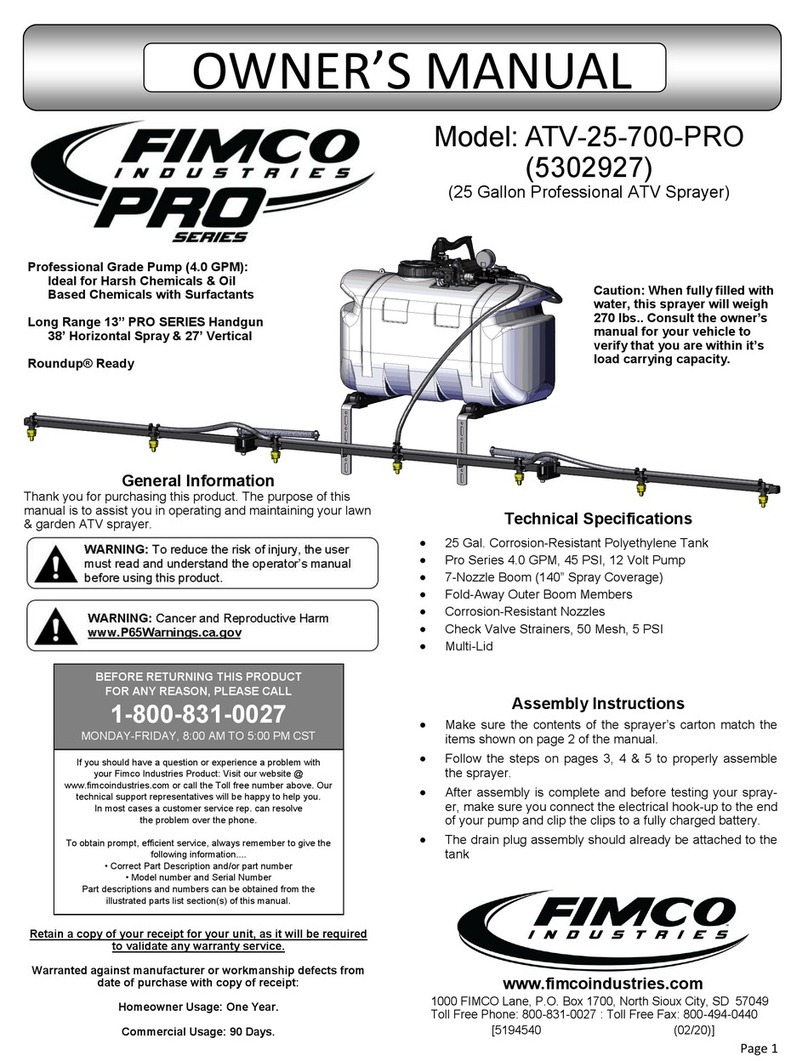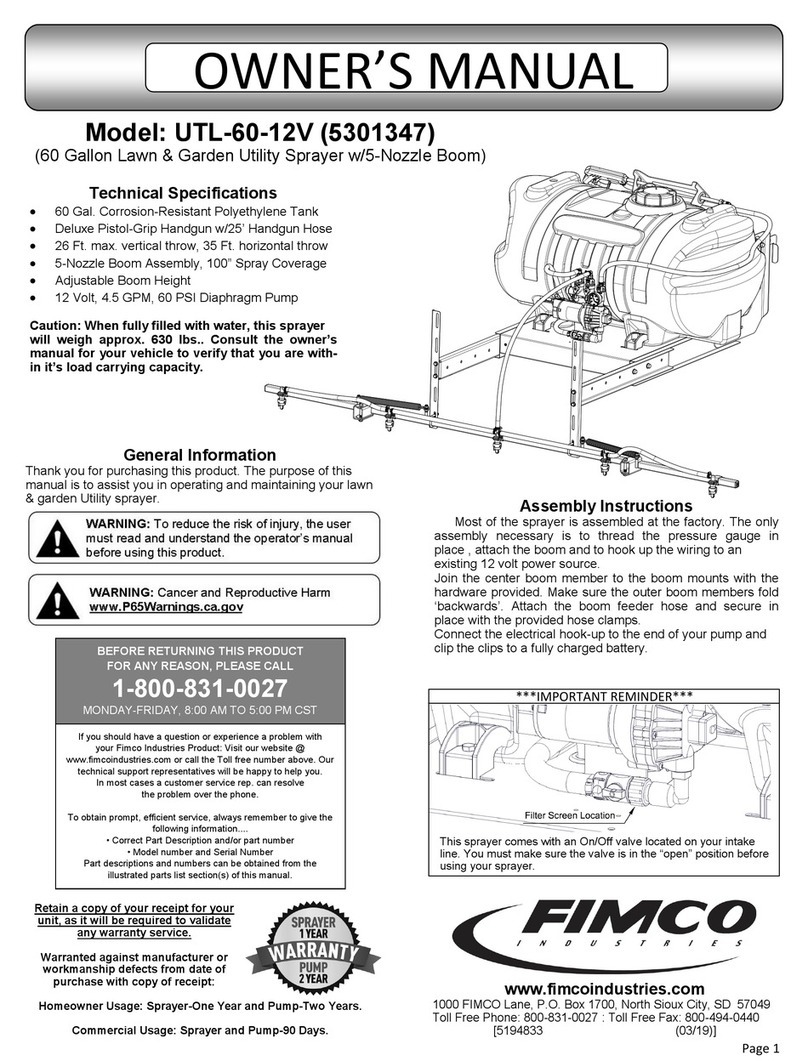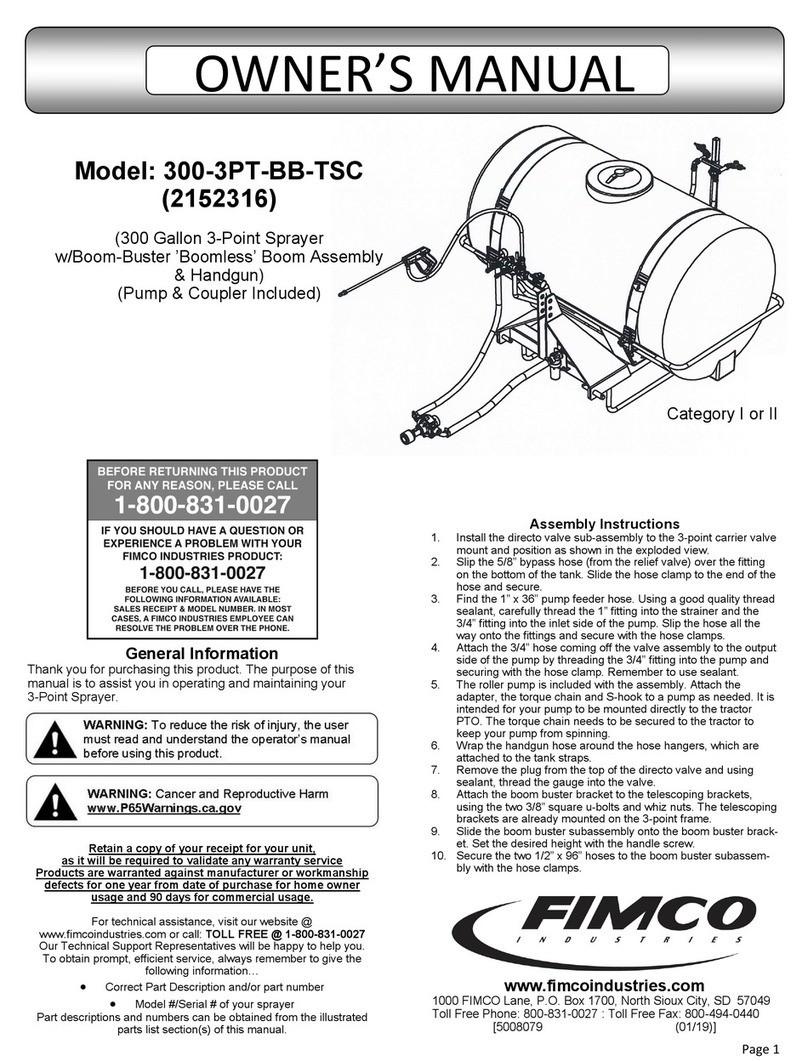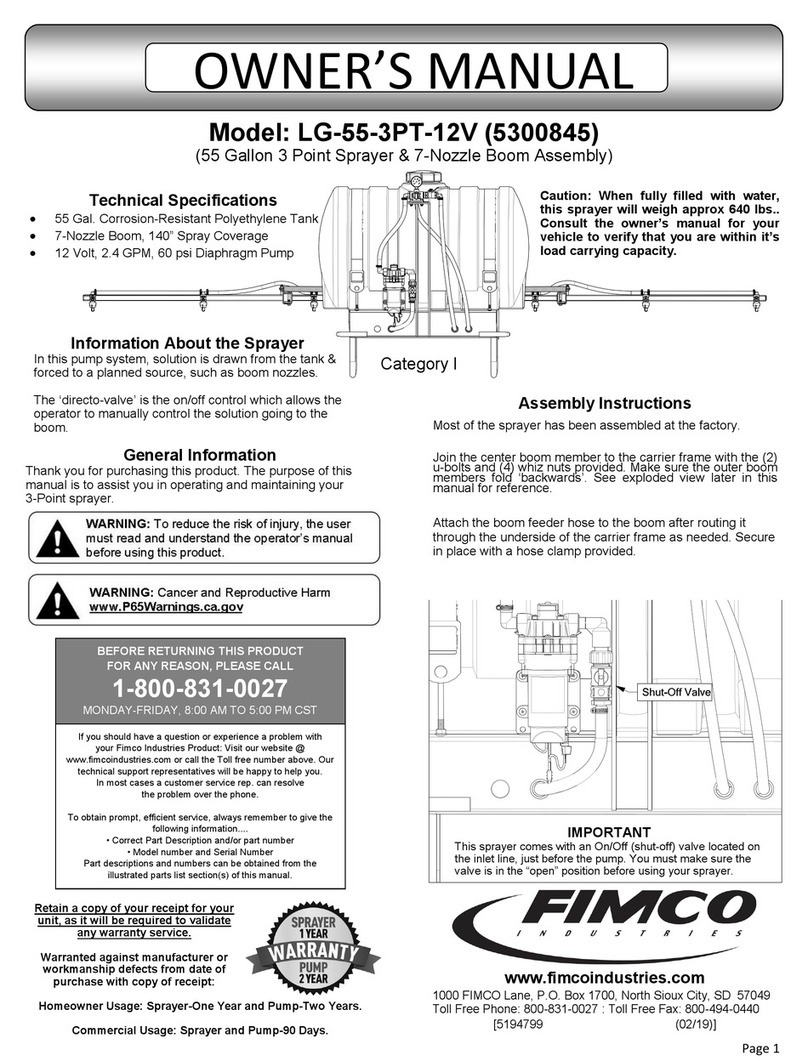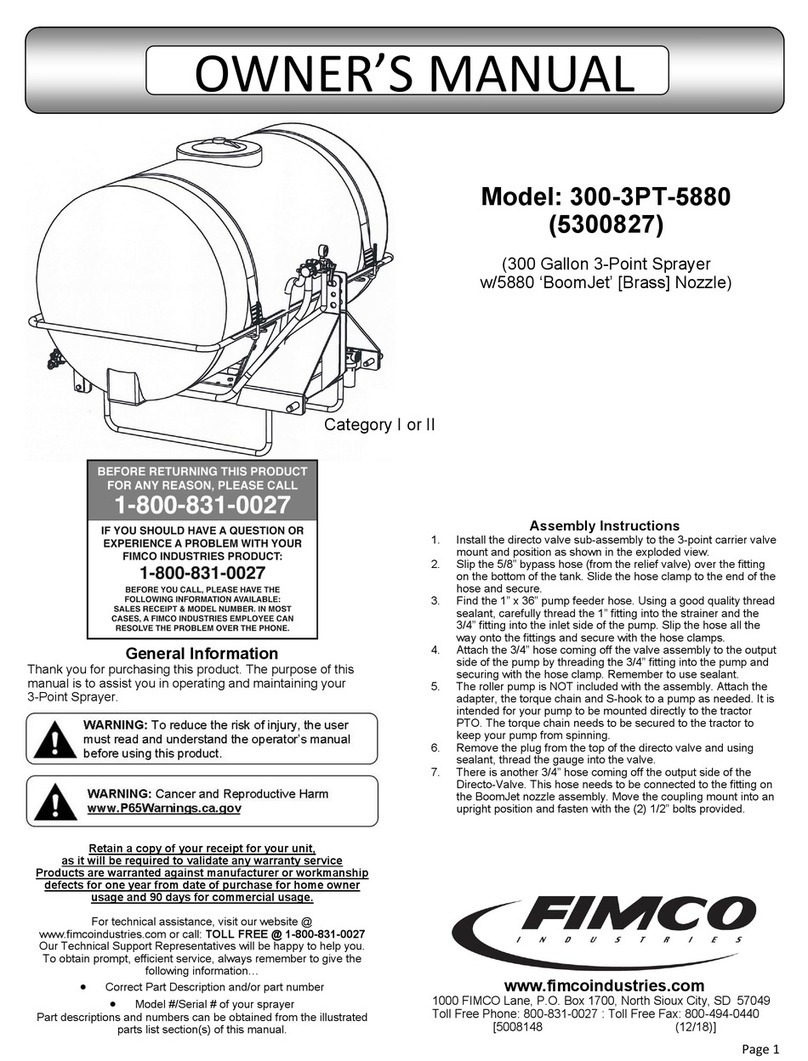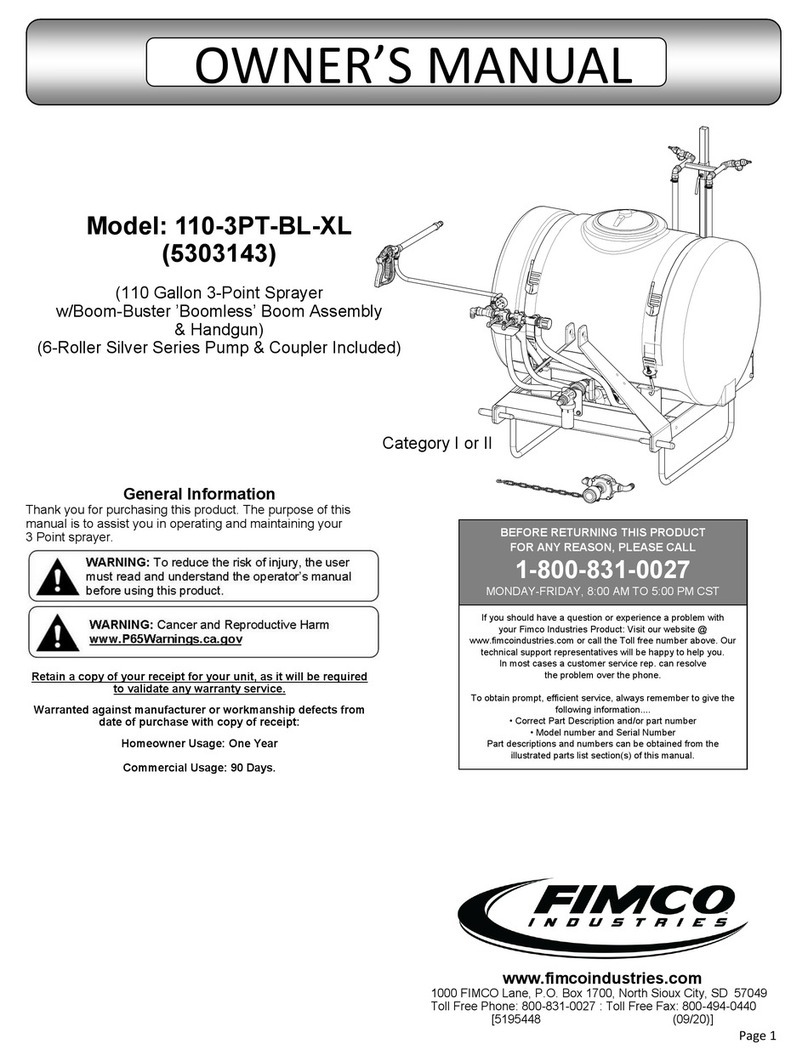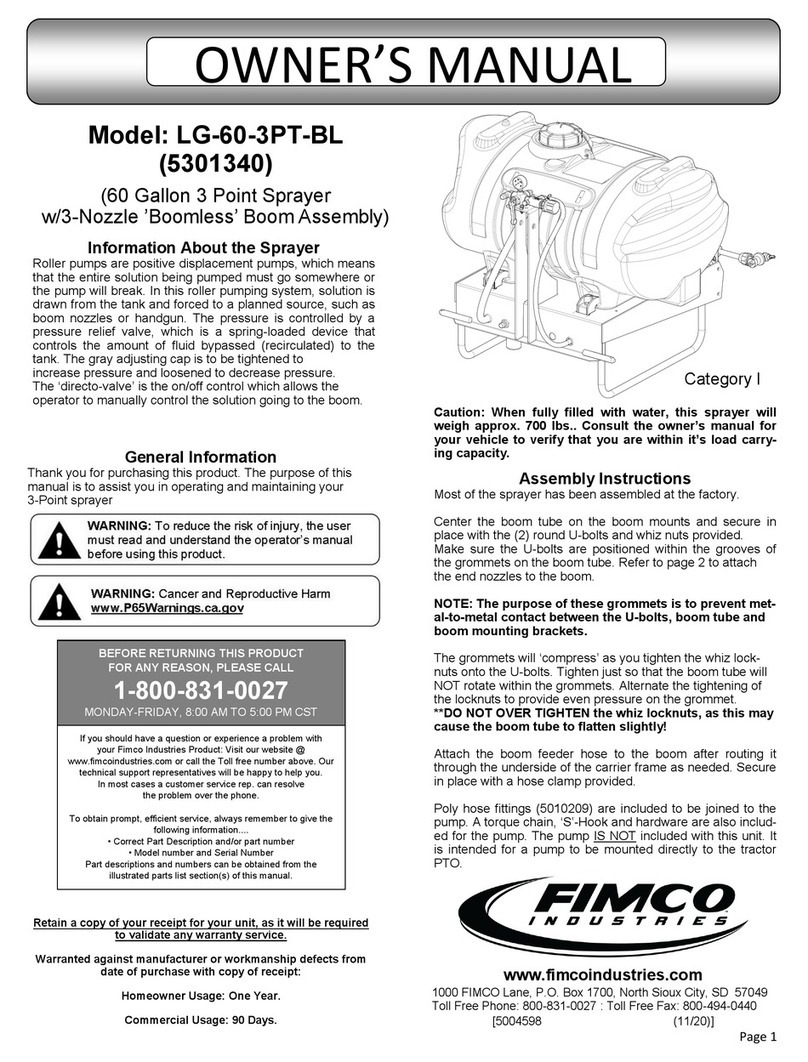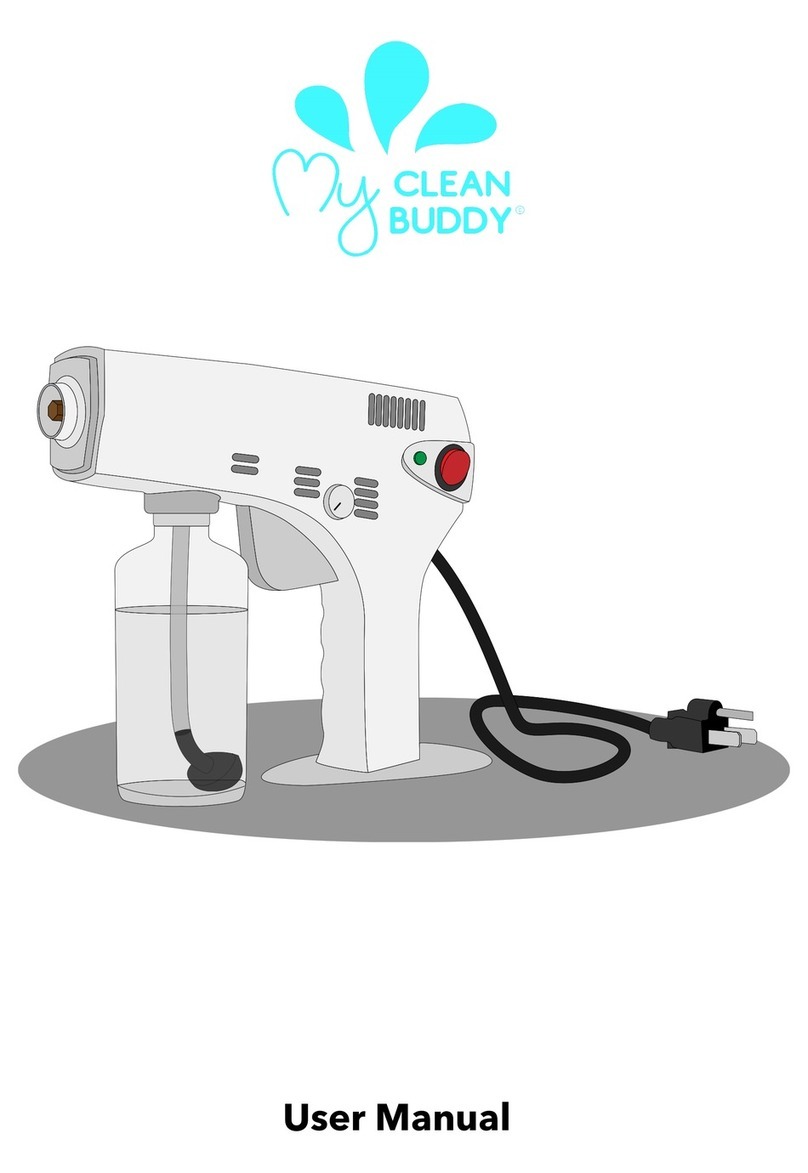
Calibration
Chemical labels may show application rates in gallons per
acre, gallons per 1000 square feet, or gallons per 100
square feet. You will note that the tip chart shows all 3 of
these rating systems.
Once you know how much you are going to spray, then
determine (from the tip chart) the spraying pressure (PSI),
and the spraying speed (MPH).
Determining the proper speed of the pulling vehicle can be
done by marking off 100, 200, & 300 feet. The speed chart
indicates the number of seconds it takes to travel the
distances. Set the throttle and with a running start, travel the
distances. Adjust the throttle until you travel the distances in
the number of seconds indicated by the speed chart. Once
you have reached the throttle setting needed, mark the
throttle location so you can stop and go again, returning to
the same speed.
Add water and proper amount of chemical to the tank and
drive to the starting place for spraying.
Time Required in seconds to travel a distance of:
200 Ft.
(Miles per Hour)
100 Ft.
2.0
3.0
1.0
5.0
6.0
7.0
9.0
8.0
10.0
4.0
157.6
6.8 14
68 sec.
17
8.5
9.7
11
14
34
23
34
17
19
23
27
136 sec.
68
45
Speed in M.P.H.
Speed Chart
300 Ft.
23
20
51
34
41
29
26
68
102
205 sec.
Gallons Per 1000 Sq. Ft. - Based on Water
MPH
Pressure
Pressure
AIXR11002VP
Number
AIXR11002VP
Number
Tip
Tip
18"
Height
Spray
18"
Height
Spray
.27.34
.45
.680.2040
Gallons Per Acre - Based on Water
(GPM)
Capacity
(GPM)
Capacity
0.2040
30
20
15
(psi)
0.17
0.14
0.12
30
20
15
(psi)
0.17
0.14
0.12
29.859.6
MPH
.58
.48
.41
2
50.4
41.6
35.6
MPH
1
MPH
25.2
20.8
17.8
2
.23
.19
.16
MPH
5
11.9
10.1
8.3
7.1
MPH
5
14.919.8
.29
.24
.20
MPHMPH
.39
.32
.27
34
12.6
10.4
MPHMPH
16.8
13.8
11.8
3
8.9
4
7.4
9.9
8.4
6.9
5.9
MPH
6
6.3
5.2
4.5
8
Page 2
Your sprayer is equipped with one ON/OFF switch. This is
on the wire assembly that you hook up to your battery. The
"-" is the "ON" position and the "o" is the "OFF" position for
the switch.
In addition to the ON/OFF switch, the pump is equipped with
an electronic pressure switch that is factory pre-set for it to
shut off at 60 p.s.i.. This switch assembly is the 'square box'
on the head portion of the pump.
Always fill the tank with a desired amount of water first, and
then add the chemical slowly, mixing as you pour the
chemical into the tank. You may use the handgun to spray
into the solution in order to mix the chemical and water.
Initially begin spraying by using the handgun. This will
enable the air in the line to be purged through the handgun
tip, while building pressure.
The pumping system draws solution from the tank, through
the strainer/filter, and to the pump. The pump forces the
solution under pressure to the handgun and/or boom
nozzles.
Open the handgun by squeezing the handle lever.
•
Rotating the adjustable nozzle tip on the handgun will
•
change the tip pattern from a straight stream to a cone
pattern (finer mist).
Operation
6. Connect the wiring harness to the wires coming out of
the back of the pump. Connect the wiring from the wiring
assembly to the 12 volt power source of the vehicle. The
red wire must go to the positive terminal (+), and the black
wire must be connected to the negative terminal of the
battery, or a common ground connection (-).
7. Remove the drain plug, and handgun clips from the
parts bag and attach them to the tank, as shown in the
exploded view drawing.
Assembly (continued)
Testing the Sprayer
NOTE:
It is VERY important for you to test your sprayer with
plain water before actual spraying is attempted. This
will enable you to check the sprayer for leaks, without
the possibility of losing any expensive chemicals.
Add water to the tank & drive to the starting place for
spraying. When you are ready to spray, turn the boom valve
to the "on" position. This will start solution spraying from the
tips of the boom. The pressure will decrease slightly when
the boom is spraying. Adjust the pressure by turning the
"ON/OFF" valve lever on the pressure adjust valve.
Initially begin spraying by closing the 'pressure adjust' valve
(this is the ON/OFF valve located at the end of your
manifold assembly) and opening the boom line valve (this is
the 'middle' valve on the manifold). This will enable the air in
the line to be eliminated (purged) through all the tips, while
building pressure. When everything tests correctly (no
leaks, & good pressure), add the desired chemicals to the
mixture and water combination and start your spraying
operation. Adjust the pressure and spray as you did in the
testing procedure.
Conditions of weather and terrain must be considered when
setting the sprayer. Do not spray on windy days. Protective
clothing must be worn in some cases.
Be sure to read the chemical label(s) correctly!
CAUTION: Always check your vehicle load rating before
using this sprayer. The loaded weight of the sprayer and
boom assembly is about 275 lbs. when the tank is full.
Care must be taken not to tip the vehicle over
backwards, especially when starting or accelerating.
